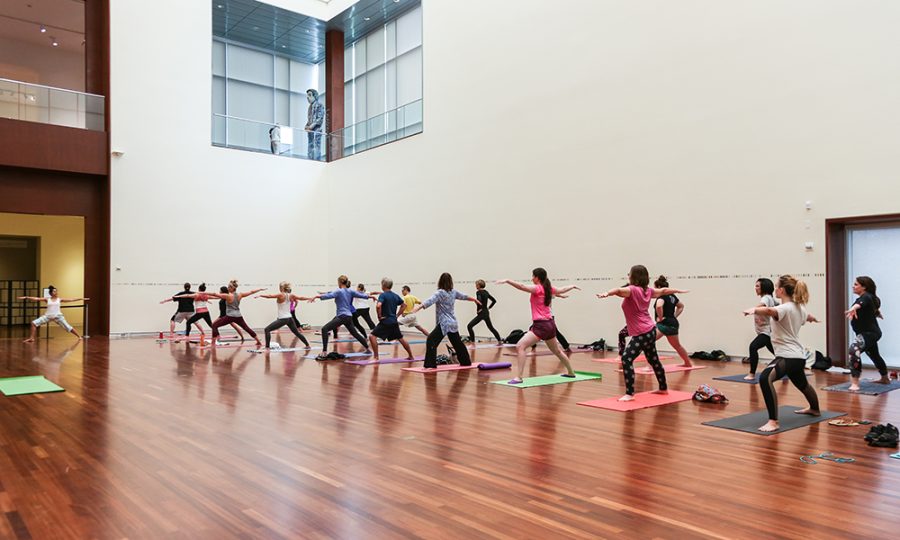UMFA’s Art + Wellness Program Brings Movement and Meditation to the Museum Floor
May 15, 2023
The University of Utah’s Utah Museum of Fine Arts hosts a multitude of interactive programs for adults, children and families with topics varying from art history, to live music, to hands-on creation. The Art + Wellness program, open to students, faculty and museum members, brings physical and mental wellness onto the museum floor.
Art + Wellness
Derrek A. Wall, manager of adult and university programs at UMFA, said the program started as “a way to integrate art into larger conversations about how to live better and finding ways to draw connections between being healthy and fine art.” Art + Wellness began with yoga in the museum’s Great Hall and has since branched out into mindfulness sessions and most recently, tai chi.
Moving Through Tai Chi
Tai chi is technically a Chinese martial art, but the physical and mental health benefits, along with the slow, low-demand movements, make it a popular practice among seniors around the world.
Instructor Mike Farfel, UMFA protection services supervisor, speculative fiction author and martial artist led students through a seven-week tai chi program. From March 16 through April 27, participants gradually worked through the techniques and founding principles of this traditional martial art alongside permanent exhibits on the museum’s floor.
Rethinking Medical Diagnostics Through Art History
One of the more innovative programs offered through Art + Wellness is the Visual Thinking Strategies program. In partnership with the U’s School of Medicine, this class has helped medical students rethink what it means to look closely since 2011. The program encourages the students to dig deep into the intricate details of classic artwork and then translate those skills into their work examining medical images.
Wall explains visual thinking strategies as “an object-based method of viewing art based on close-looking skills.” Rather than casting fine art aside as unrelated to the sciences, Visual Thinking Strategies reminds us how appreciating fine art can not only be beautiful but incredibly important to developing as a society. On linking medicine and masterpieces, Wall adds that “you wouldn’t think that those are correlated, you know? But they are! Looking at an x-ray closely is just as important [as looking at art], so, if you’re gonna spend time practicing that skill it would make sense to do it on art, where there’s so much to look at.”
The Art + Wellness program is free for staff, students and faculty, so be sure to check UMFA’s calendar for program dates during the Fall and Spring semesters. Although it may be too late to become a master of tai chi or to reinvigorate your scientific knowledge through some beautiful paintings, UMFA’s collection of exhibitions is always available to U students with their Arts Pass, as well as countless other artistic and musical events hosted across campus. If you want to participate but aren’t enrolled, consider joining UMFA’s membership program and help support the institution as well as your own mental and physical wellness.







